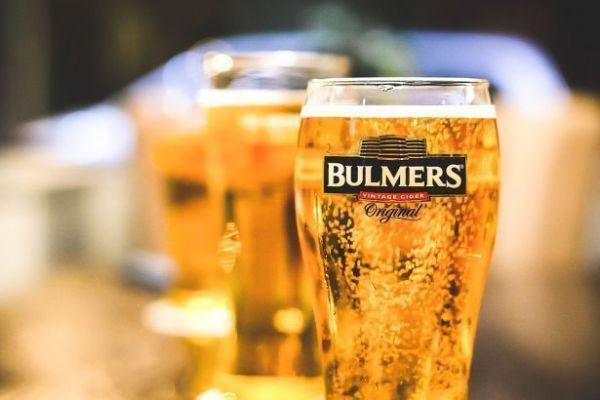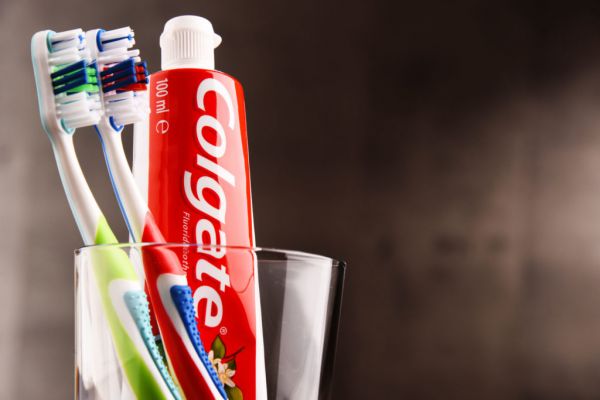Gilbeys is bringing new suppliers and innovative products to the Irish market, following its parent group C&C’s acquisition of Matthew Clark and Bibendum in the UK last year. Maev Martin talks to Duncan Millar, head of wine at Gilbeys with Bibendum, about its massively expanded portfolio, changing consumer habits, and preparing for MUP
This article originally featured in the Checkout Magazine June 2019 Edition.
Matthew Clark and Bibendum are two of the UK’s largest independent drinks wholesalers to the hospitality industry. Combined, both businesses serve over 24,000 outlets, so its acquisition in March 2018 gives the Gilbeys operation in Ireland the opportunity to introduce a wide range of new products to the Irish market.
“For example, we have brought in some Brazilian and Chinese wines that we wouldn’t have been in a position to buy in direct,” says Millar. “Now we can bring in mixed pallets of these types of products at a time, if we want to. As a distributor of some of the biggest brands in Ireland, such as Santa Rita, Doña Paula, Yellow Tail and Hardy’s, there is a range, depth and breadth to our portfolio, and, with the link to Matthew Clark and Bibendum, we can now offer improved value and choice – and it is not just about offering a better price. We believe that the acquisition of Matthew Clark and Bibendum will make us more attractive to potential suppliers in Ireland. For example, Bottega worked with our colleagues in the UK for many years, and we have now brought them on board, and we hope that they will be the first of many new suppliers that we will be working with in the Irish marketplace, going forward.”
While the acquisition broadens the product portfolio, it hasn’t led to the elimination of the Gilbeys name, which has been synonymous with quality wines in Ireland for many years. “The Gilbeys name is well known in Ireland, so we are transitioning by calling ourselves Gilbeys with Bibendum,” says Millar.
Telling The Trade
Gilbeys has added up to 180 new wines to its list in Ireland as a result of last year’s UK acquisitions. “Most of these will be available to the on-trade in Ireland, and a selection is available to the independent off-trade,” says Millar. “We can make different labels available to different customers. We work with retailers to identify gaps in their portfolio, and if, for example, there is a resurgence in interest by consumers in a particular varietal, we will work with customers to source, package and distribute a product exclusively for them.
“We have reviewed and revised our range, and we have a new brochure for the on-trade and for independent wine specialists. We have also identified additional new suppliers that we would like to work with, we are constantly reviewing retailer feedback and building it into our planning, and we are, of course, investing in our resources and in training.” The quality wine distributor was busy in April this year, hosting events in Galway, Dublin, Belfast and Cork, to inform the on-trade and independent off-licences about its new and improved portfolio.
“We had separate face-to-face discussions with off-trade retailers, and in the autumn of this year, we will run two more trade events in two locations, which will be more specific,” he says. “For example, they might focus on artisanal wines, sparkling wine, or rosé. The idea is to keep the trade in Ireland interested in and informed about product range and diversity.”
What’s Trending?
Premium, artisanal, and non-alcoholic are major trends in the alcoholic drinks market, as consumers become more quality- and health-conscious. Gilbeys with Bibendum is responding to these and other trends with some new and interesting offerings for the Irish market.
“Health and well-being is the number-one trend, followed by a move towards more responsible drinking, which is driving lower- and zero-ABV products,” says Millar. “This is still a relatively small market, and the biggest barrier to developing this market is quality."
“We don’t have a zero-ABV wine in our portfolio. There are good beer offerings at zero ABV, but it is a lot more challenging when it comes to wine. A third big trend is requests for vegan wines, but that is being driven more by the on- than the off-trade, currently. Interest in biodynamic wines is also gathering momentum. We are seeing demand for these at the top end of the market. There is also a major rise in demand for rosé, and this has been gaining momentum, along with other categories, such as pink gin.”
Rosé grew from 2% to 5% of the market in the summer of 2018, and it looks set to grow further this summer. C&C Gleeson is currently launching Bulmers Rosé in the on- and off-trade, and Millar says that the response has been “phenomenal”. This pink cider is lighter in taste than a typical cider, and the packaging has a softer, more feminine look.
“We are also seeing a rise in demand for different grape varieties. For example, Riesling is increasing in popularity, whether that be from Chile, New Zealand or Australia. We are also noticing a strong and increasing demand for Spanish Albariño. People are now prepared to try new varieties and flavours. Additionally, in the on-trade and in the higher end of the off-licence market, we are seeing a trend towards artisanal wines, and our link with Bibendum and Matthew Clark allows us to respond to that demand.”
Gilbeys with Bibendum will shortly add prosecco from Bottega to the off-trade range, and interesting blends such as Riesling/Pinot Grigio from Brazil will be available to specialist off-licences.
Do customers buy wines by grape or brand?
“Price is still a key driver of purchase in the off-trade, but the brand is also important, and we can see that, particularly with Santa Rita and Yellow Tail,” says Millar. “That is why we are increasing the reach of these brands by adding new varieties. With Santa Rita, we have added Early Harvest Sauvignon Blanc, and we have added a rosé to the Yellow Tail range this year, which we launched at the Taste of Dublin festival.”
Minimum Unit Pricing
The Matthew Clark and Bibendum business has a large and proactive insights team in the UK, which commissions wide-ranging market research to help identify business opportunities.
“Unfortunately, we don’t have the base data required to duplicate all of that in the Irish market,” says Millar, “However, our UK team’s research, particularly regarding trends, can still add value to our operation in Ireland. We are currently working with them in relation to Minimum Unit Pricing (MUP), which has been in operation in Scotland for the past 13 months. When it happens in Ireland, the impacts will almost certainly be similar.
“In Scotland, we have seen an uplift in wine purchasing over the past 13 months, and we are likely to see an increase in the purchasing of wine here because, as discounted beer and cider becomes more expensive per litre of alcohol, the pricing gap closes between those products and wine. We know that MUP is happening. It is just a case of when.”
Research on Irish consumer attitudes to MUP, carried out by Gilbeys with Bibendum, is due towards the end of June, and the findings of that research will inform preparations for its introduction.
“The research is us talking to consumers and asking them about their view of the current situation and how they would react if MUP is introduced,” he says. “I remember being in Morrisons and Tesco on the day it was introduced in Scotland, and shoppers were confused about the higher prices. At the moment, and for the past few years, the pricing in heavy multi-buy activity has been helping to drive the purchase of wine in the off-trade in Ireland. What we know from our research into the impact of MUP in Scotland is that people will buy more regularly, in smaller pack formats, and in a more convenience-based manner. The unknown at the moment is how that will impact on the specific brands in the Irish market, as the product mix here is different to Scotland.”
A Challenging Market
Millar cites changing consumer habits – whether that is a reduction in quantity or strength, or a switch to other categories – as potential obstacles to growth for wine distributors and retailers over the next five years.
“Legislation will also have an impact, whether that be through changes to advertising abilities or on the format and amount of space available in store,” he says. “We will see lower consumption of some products, as people become more health-conscious, but there will definitely be opportunities for those who nail the low- or zero-alcohol wine opportunity. We will see an improvement in the quality and range of the wines on the market. Provenance will become more important, and consumption occasions will impact on packaging.”
Is the company concerned about its supply chain post-Brexit? “Like a lot of other businesses, we secured additional warehouse space and purchased additional stock in preparation for 29 March, which turned out to be a false start, as we all know,” says Millar. “We are now sourcing as much as we can, ex-cellar, from the EU to avoid the UK land bridge route. The big concern is the potential impact of congestion at the ports, which is why we are holding increased stock levels. Essentially, not knowing when it will happen, the administration involved, and the cost of minimising risk, as well as worries about service levels at ports and consequent extensions of lead times, are the main issues associated with Brexit.”
© 2019 Checkout – your source for the latest Irish retail news. Article by Maev Martin. Click sign-up to subscribe to Checkout.









